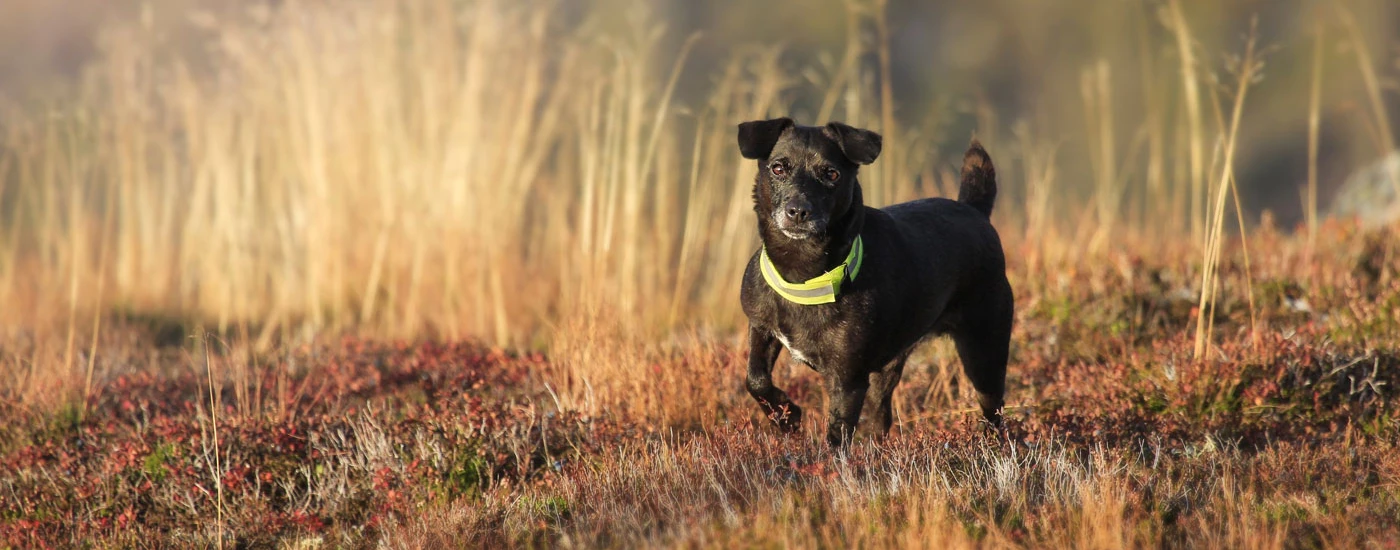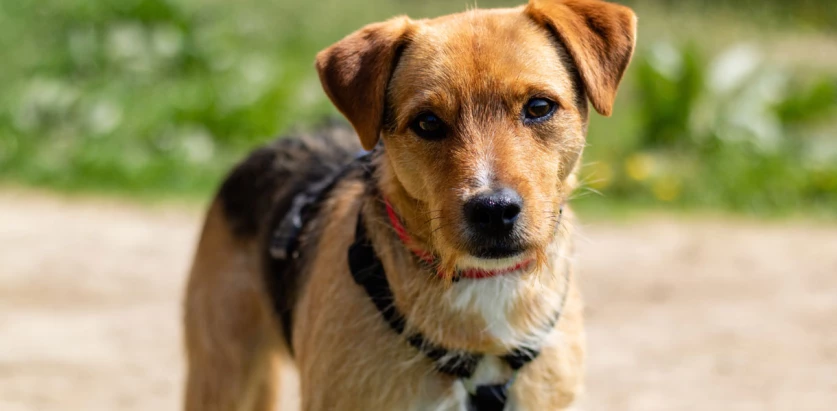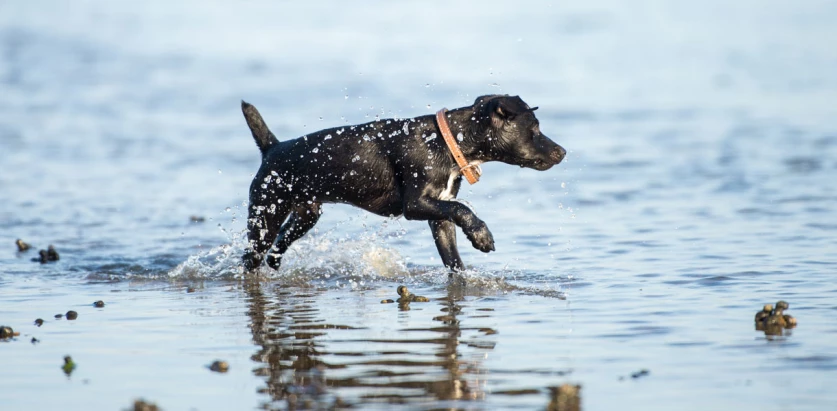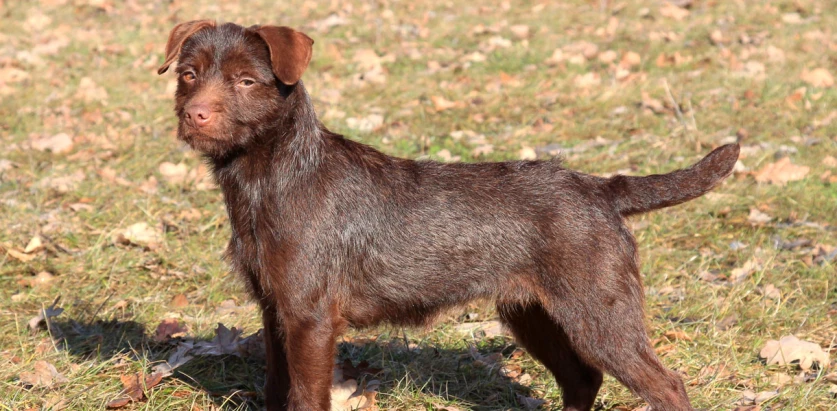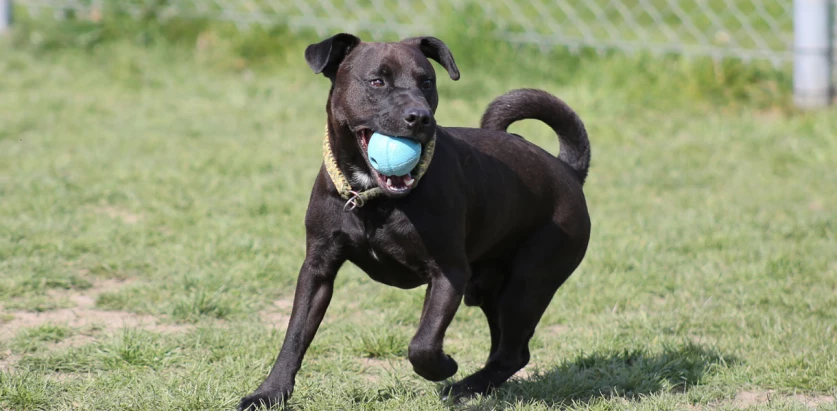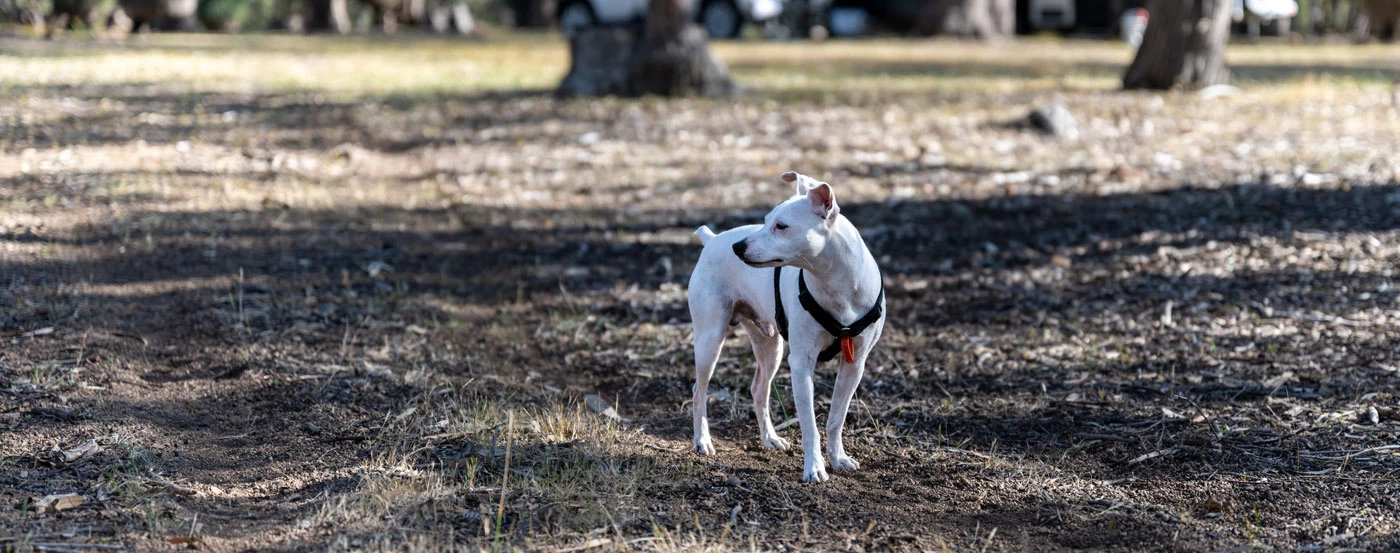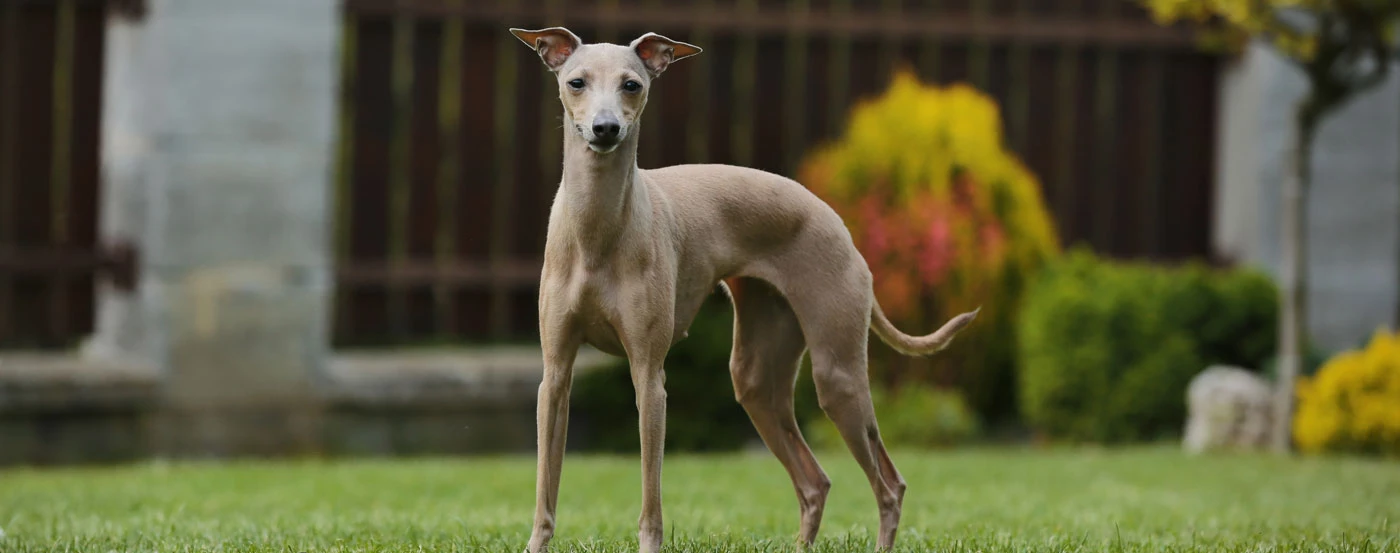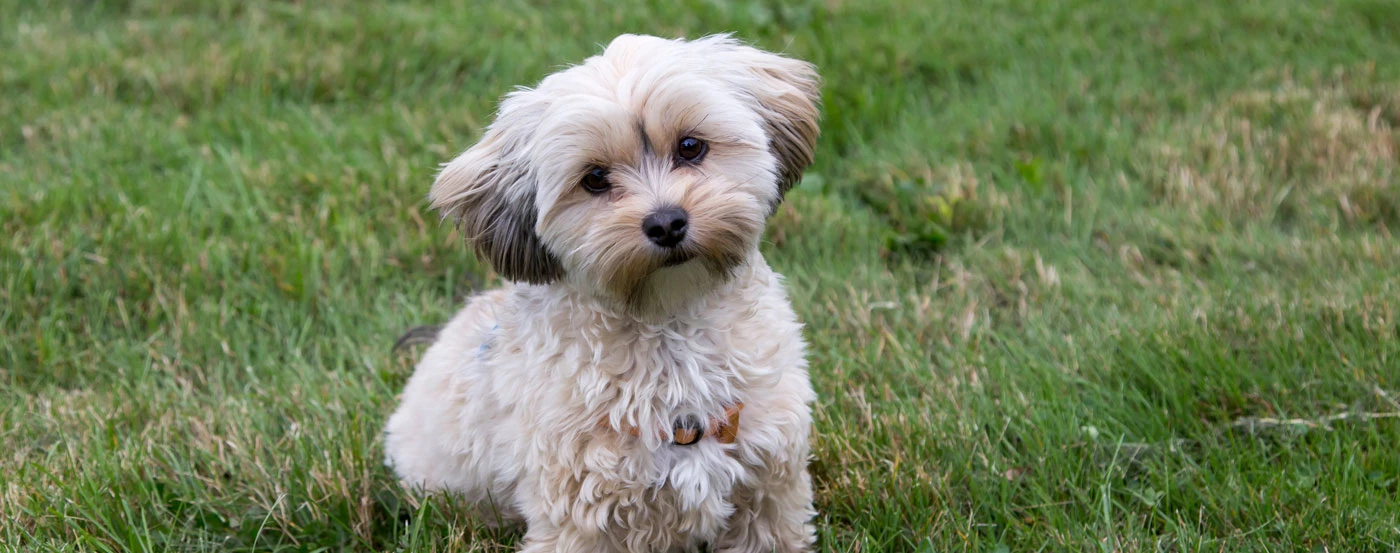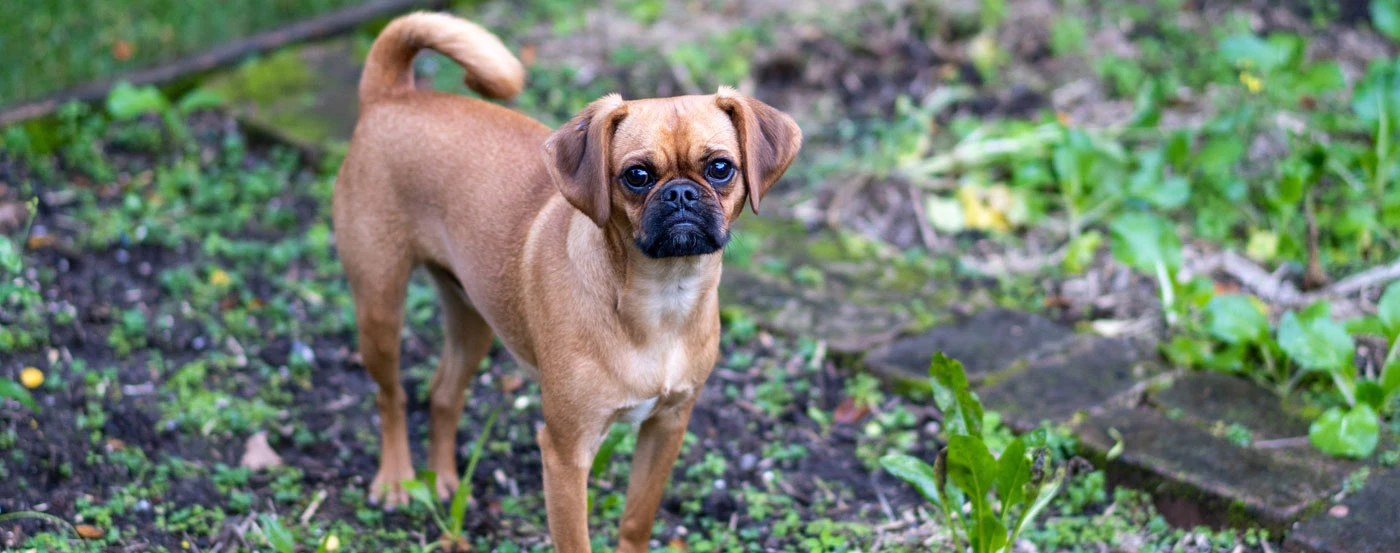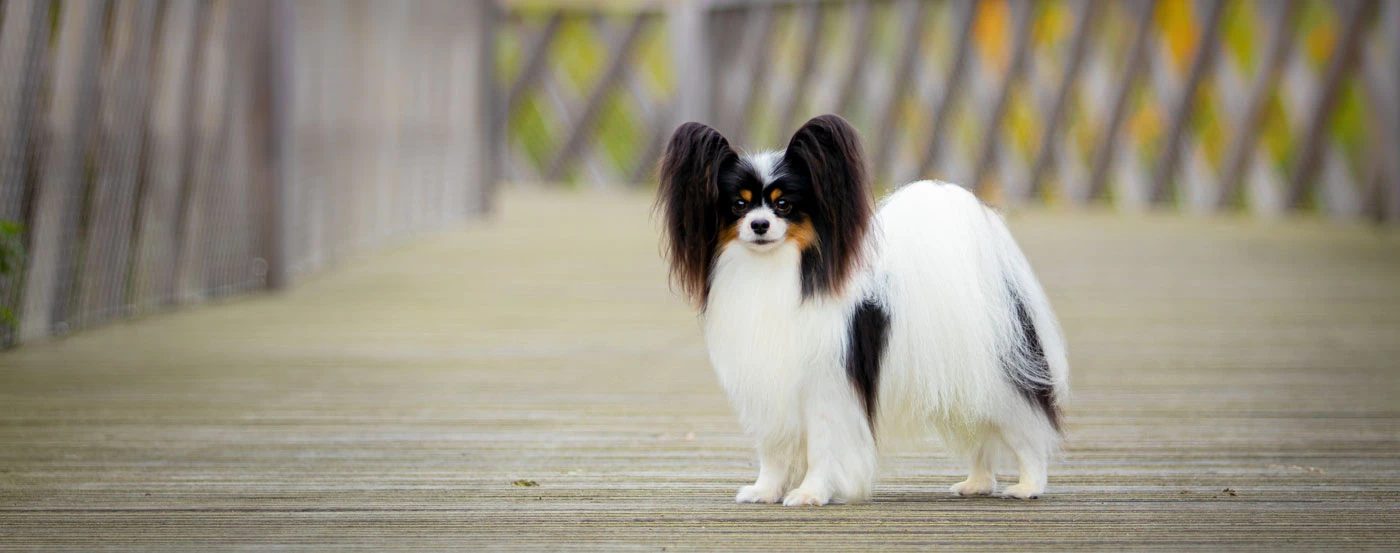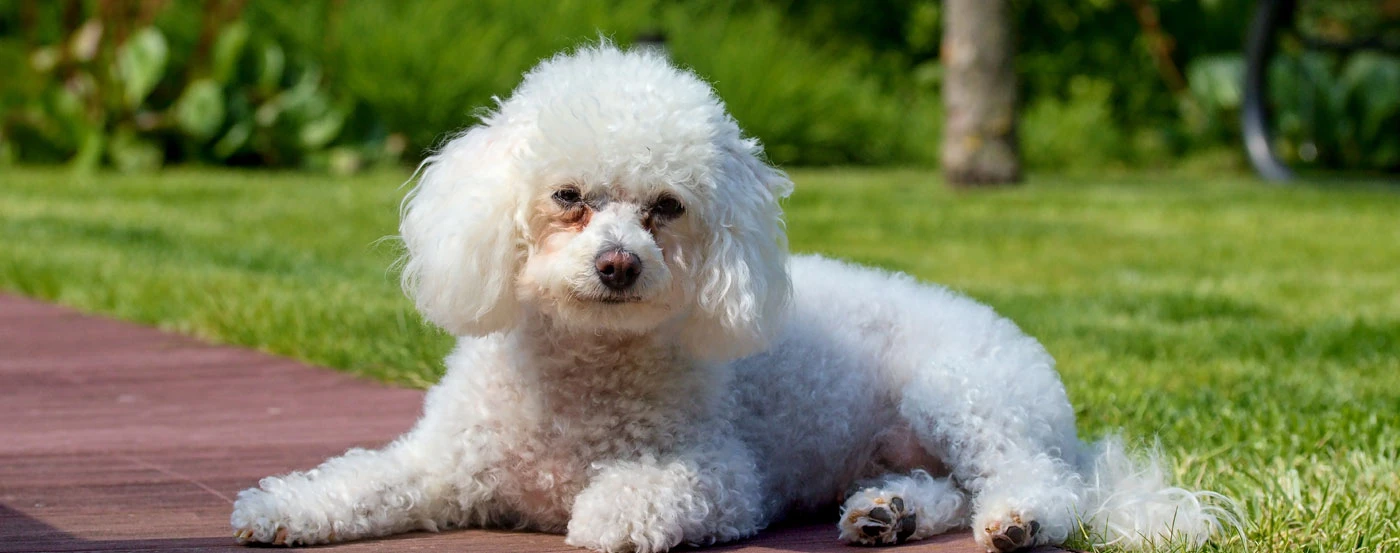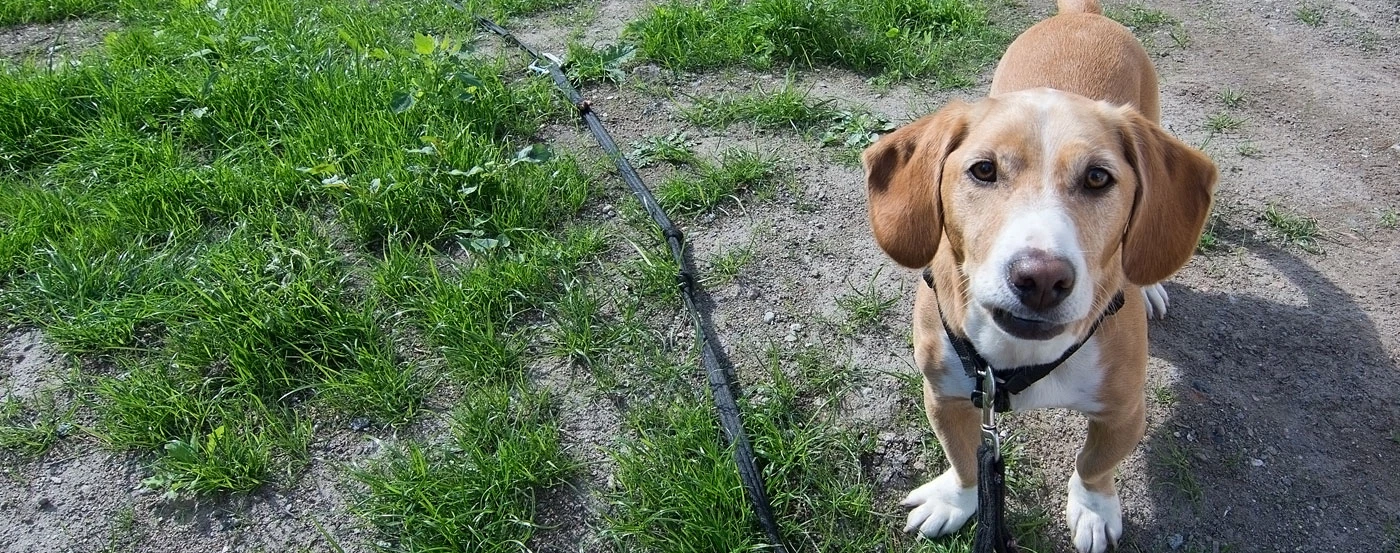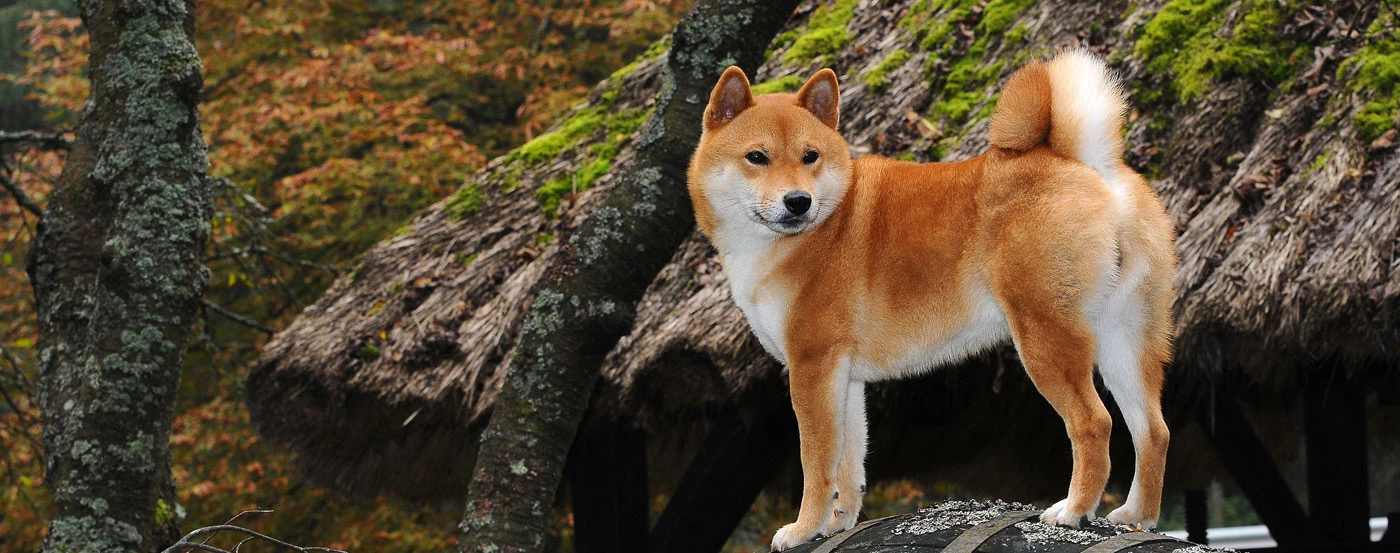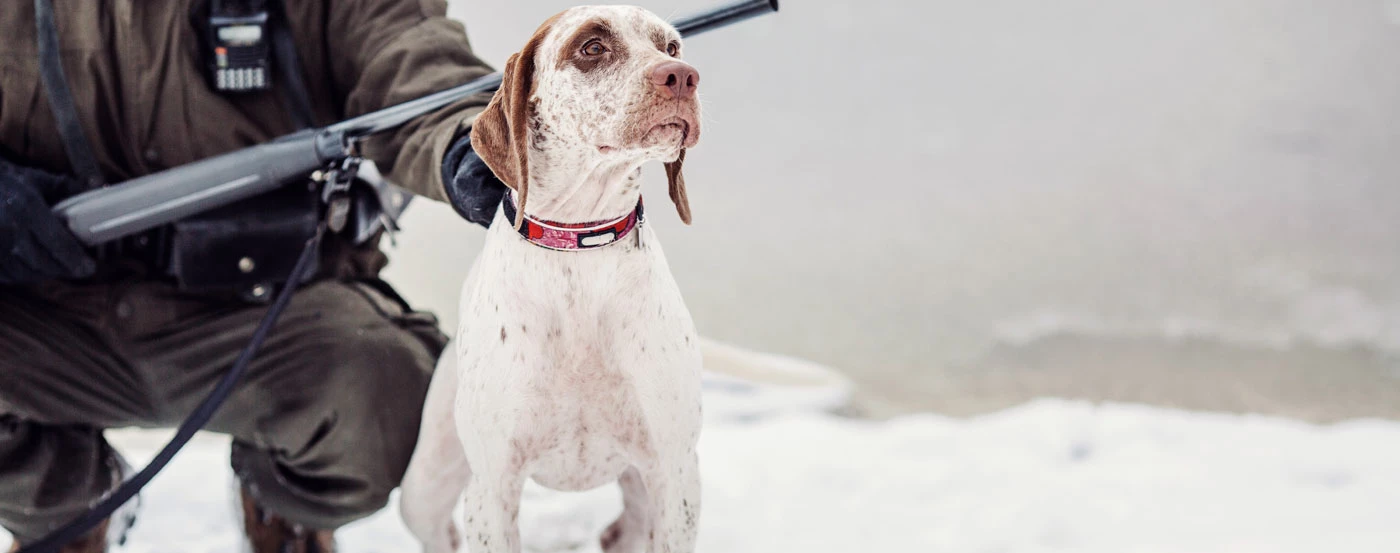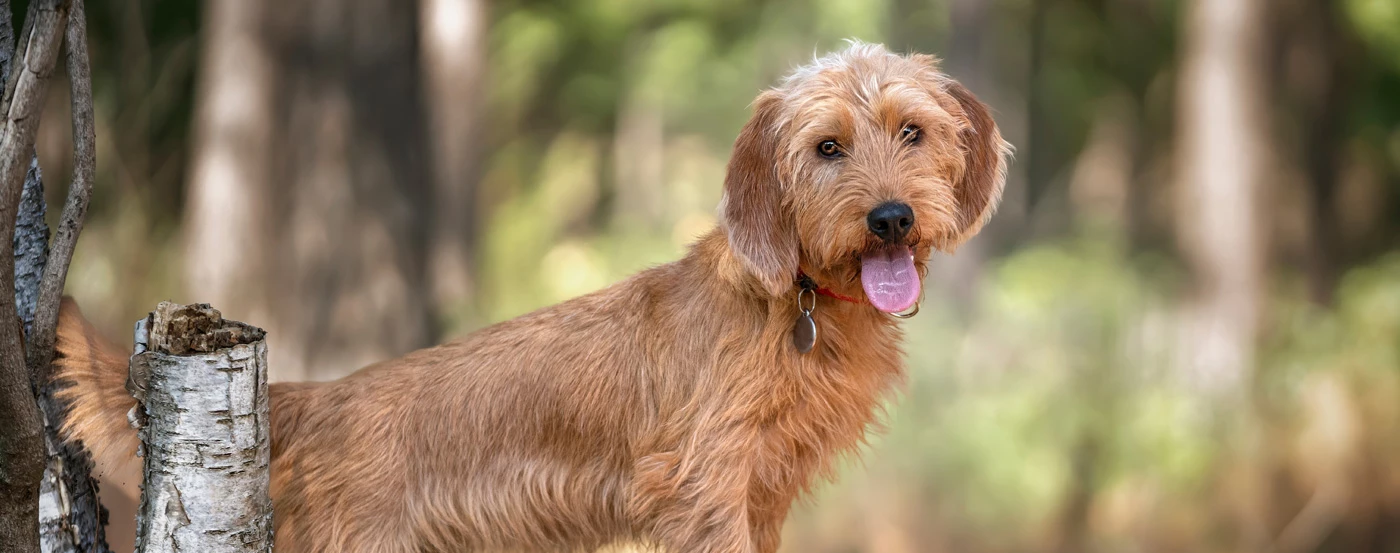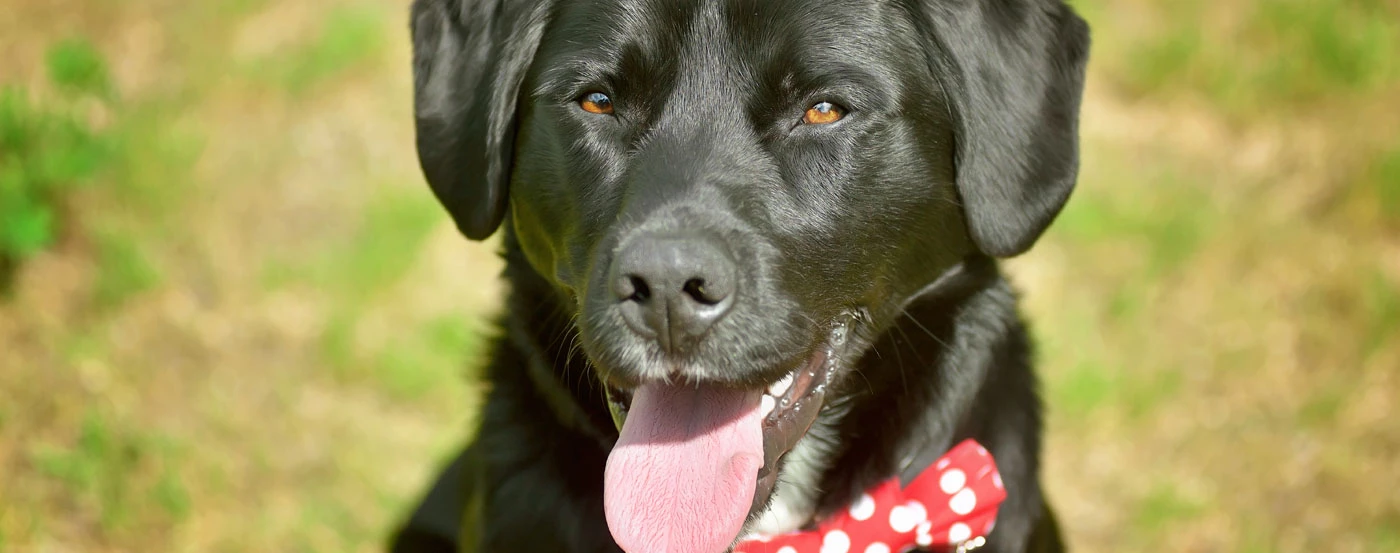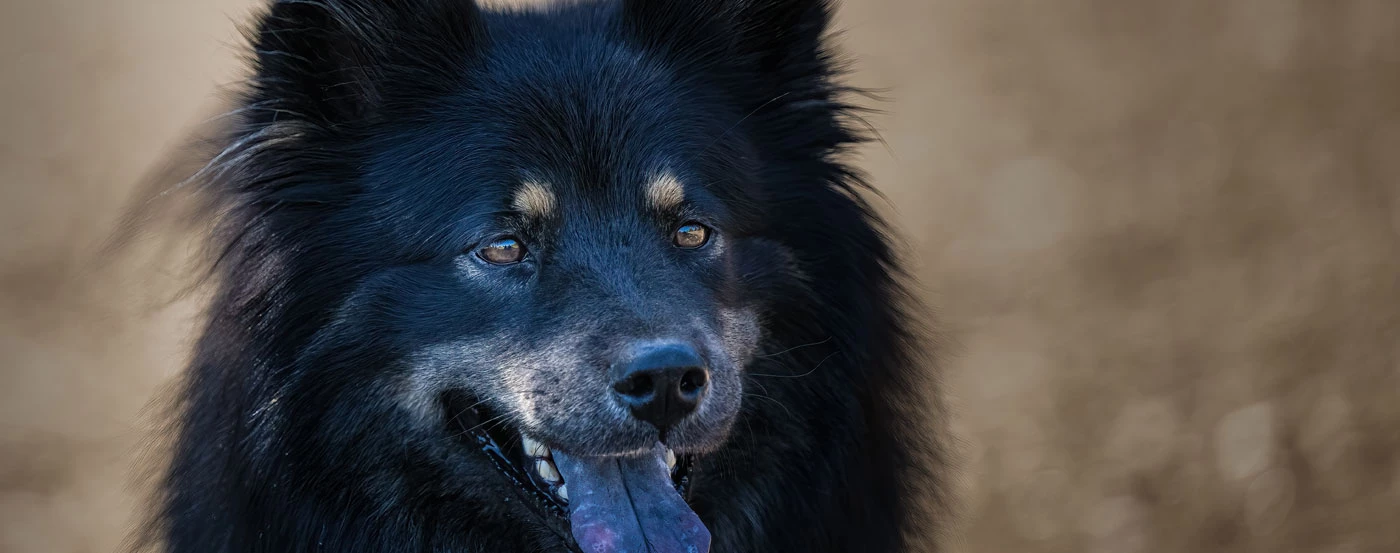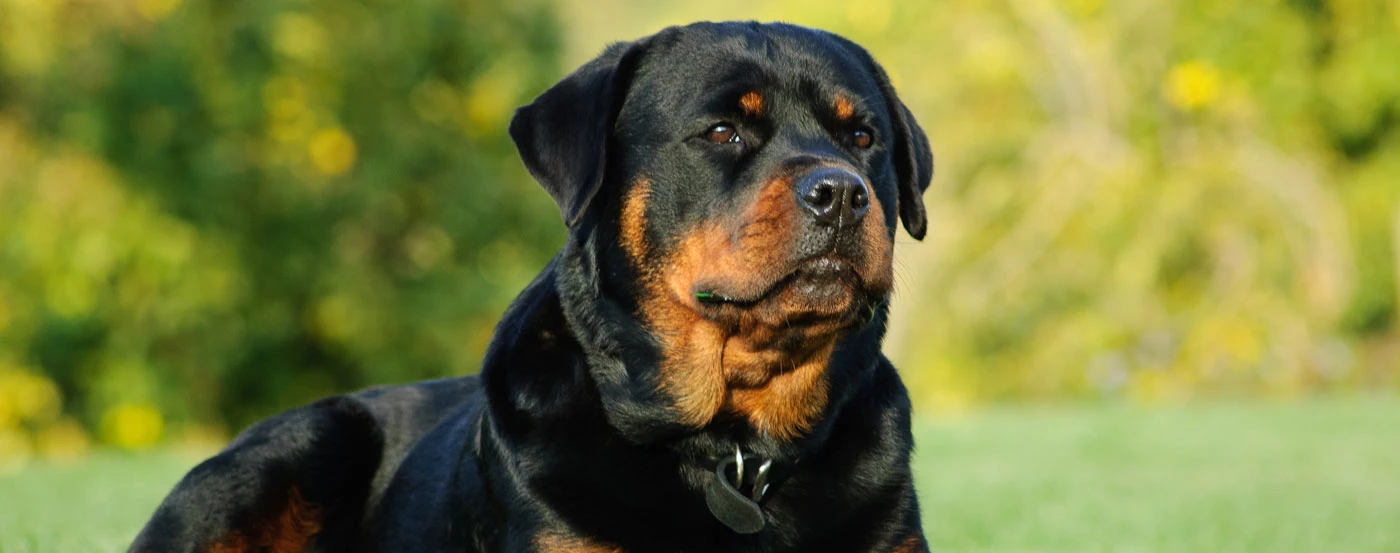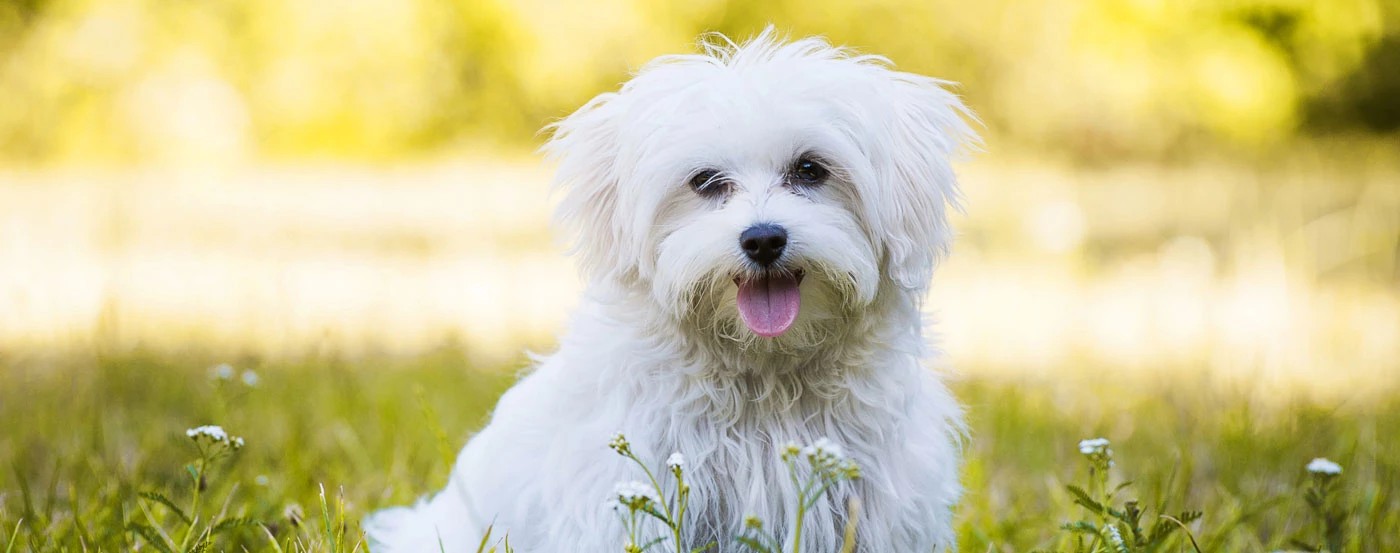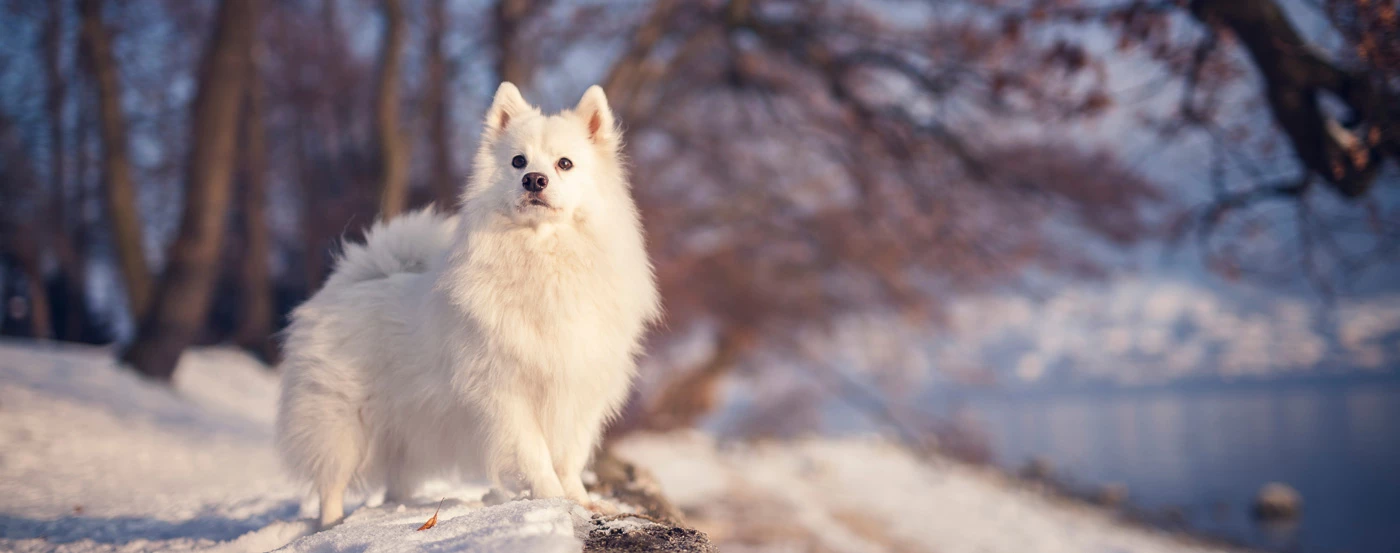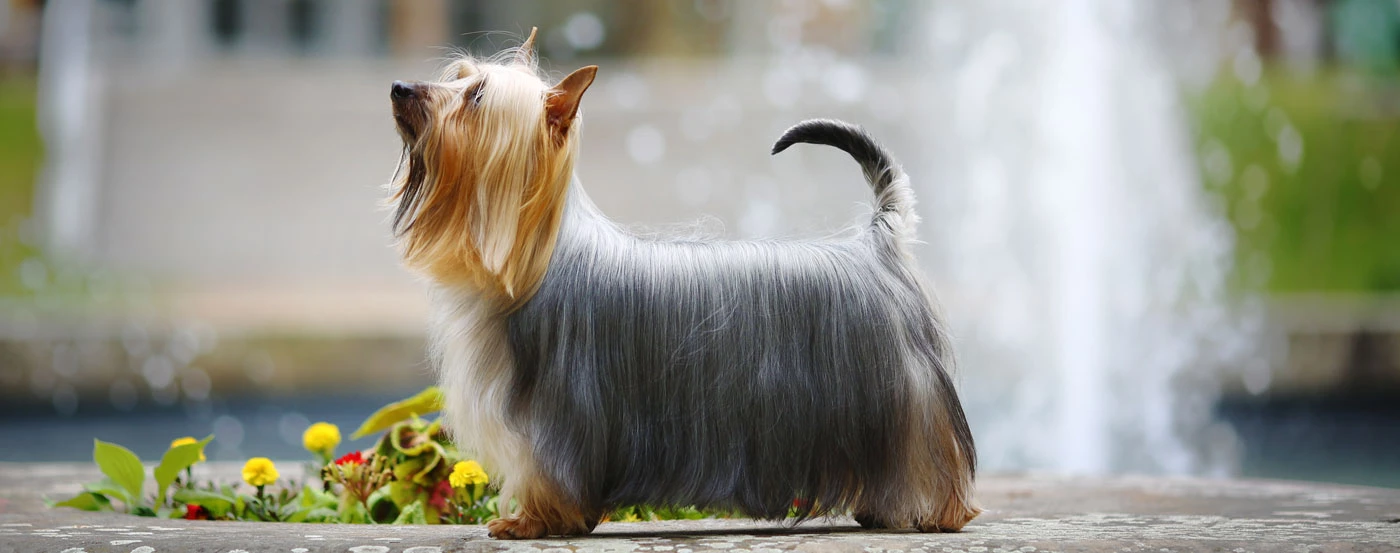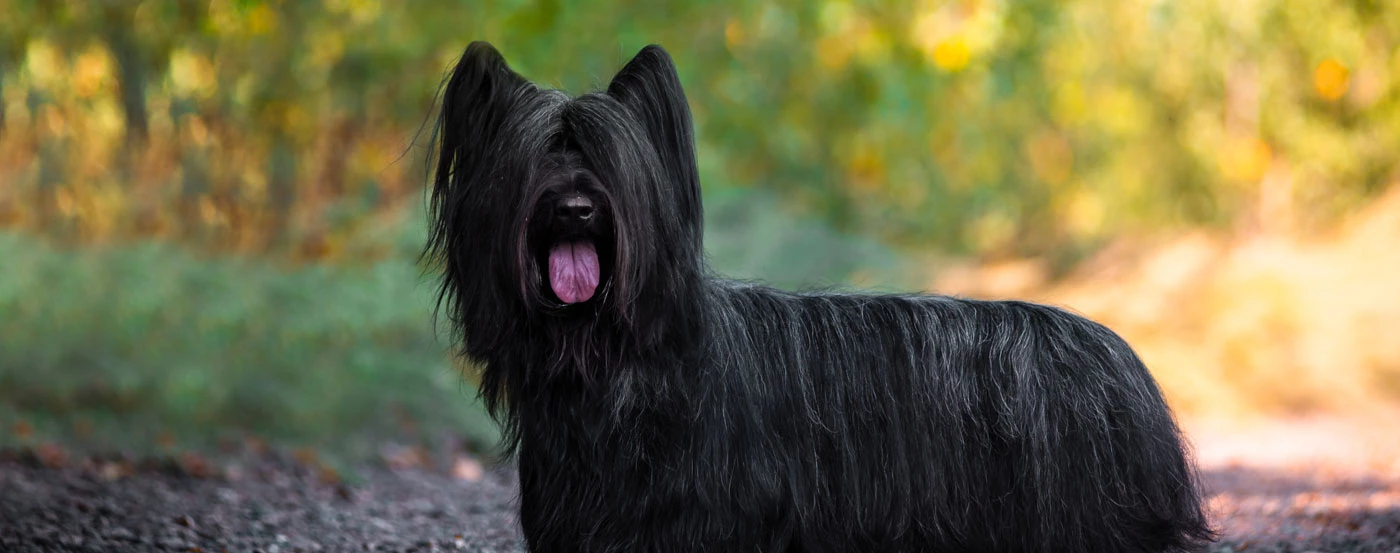About the Patterdale Terrier
Also known as the Black Fell Terrier, the Patterdale Terrier was originally bred to hunt foxes. Patterdale terriers bark less than other English Northern terrier breeds but are energetic dogs and maintain a strong chase instinct.
This dog does well in obedience programs and trains easier than other terriers though they still pack plenty of energy, so make sure you have the time and attention to offer this lively and loyal dog.
Patterdale Terrier Gallery
What is the history & origin of the Patterdale Terrier?
Breeding of Patterdale terriers began in the early 20th Century in the harsh and wet environment of the Lake District in Northern England.
Here they were used for hunting small animals and also for protecting sheep from would-be predators.
Who are Patterdale Terrier dogs best for?
Patterdales make good family pets and also enjoy dog sports, though there are a few caveats.
They are best suited for families with older children simply because their energy could lead them to bump very small children over or display behaviour that could be seen as threatening. Patterdales are just naturally lively dogs with a strong protective instinct that, if it isn't properly socialised, can lead to them appearing antisocial.
They do well around poultry and livestock due to their in-built history of protecting these animals, but their prey drive can make it difficult if you own any other smaller pets like cats. If they are raised with a cat, they are generally well behaved but may chase cats they don't know.
If these dogs are raised and trained properly, they make loyal companions who are friendly with people they know and strangers alike.
How much grooming does a Patterdale Terrier need?
This small dog breed can either have a smooth coat or a wiry, rough coat. Either way, the fur will be dense to protect their bodies from poor weather conditions and predators.
The smooth coat will be dense and coarse, while the wiry coat's hairs tend to stick up and is generally a messier look. Either way, Patterdales are generally black but can be shades of brown and sometimes have white patches on their paws and chest. They also have a little beard and moustache.
They will need to be brushed 1-2 times a week to help them shed their dense undercoat, you can get a groomer to do this, but it's easy enough to do yourself. Their nails should also be clipped once or twice a month; you'll know they're too long if you hear them tapping the floor.
Try and instigate a grooming routine as early as possible in your dogs' life, so they get used to the ritual, making it much easier for both of you.
Do Patterdale Terrier bark much?
Patterdale Terriers have a keen instinct to bark, as they were bred partly for protection, so when they bark, they're simply trying to alert you to something and not be aggressive.
This is one of the reasons they make such good guard dogs for families and livestock.
This breed trains especially well, so if barking is something you're conscious they are easily conditioned not to fall back on this hardwired instinct. Their sense of friend or foe is so strong that they will still bark if they're alerting you to an unexpected guest.
Do Patterdale Terrier bite?
Patterdale Terriers, while being dogs with a high prey instinct, are not known for biting. A Patterdale terrier puppy may nip, but this is common puppy behaviour that can be coached out of them early if you train them correctly.
This can be done via obedience training classes, proper socialisation, or by diverting their chewing habit with a chew toy or a dental treat.
What is the temperament & personality of a Patterdale Terrier?
This working dog's background makes it a stubborn, driven dog that gets bored easily. This combination can make for a difficult dog to raise at times, making them difficult to recommend to first-time owners.
If their needs are not met, such as not receiving a minimum of 30 minutes of exercise in a day, or if they are left to their own devices, boredom will set in, which can manifest as aggressive or destructive behaviour.
They can be trusted around other dogs and small children with effective training and socialisation in early life. This means it's important to teach them boundaries as puppies, especially as chasing small dogs or children while at play can activate their strong chase instinct.
What is the weight & size of a Patterdale Terrier?
Patterdale terriers are small dogs but have sturdy, muscular builds. They tend to stand between 25-40cm tall at the shoulder and can weigh between 4.9-5.8kgs once fully grown.
They have a small wedge-shaped head to help them fit into small spaces and a design of their hunting background to allow them to fit into animal burrows.
How much training does a Patterdale Terrier need?
While Patterdales are easier to train than most terriers, they can still be stubborn learners.
Once Patterdales have learned a lesson, they will remember it for life, but the initial teaching process can be difficult as they have short attention spans, and it can be tricky to get their attention back once it's gone.
You can fix this by keeping your training sessions brief and fun. Another trick is to have a good supply of treats on hand; Patterdales are very food-focused, so incorporating food into your training will speed up the process, plus it will help train them to hand-feed.
What are some of the most common health issues for a Patterdale Terrier?
Patterdales rarely suffer from congenital health defects and are generally healthy dogs, enjoying a good lease on life over their average 15-year lifespans.
However, it's always important to keep an eye out for certain potential issues. They can suffer from more joint issues than larger dogs because of their high energy output and energetic lifestyles.
They can also suffer from glaucoma or cataracts more than other dogs. Most dogs can live a full life without vision issues, but keep an eye out for the following symptoms just in case -
Cloudy eyes
Squinting
Watery eyes
Eye redness
Eye itching
What is the lifespan of a Patterdale Terrier?
The average life expectancy of a Patterdale is between 12 and 15 years.
How much should you feed a Patterdale Terrier?
Patterdales require two cups of nutritious, high-quality food every day. It should have a good spread of nutrients, vitamins, and minerals. This will vary depending on their age, size, and levels of activity. If you're buying from a breeder, they will provide you with a feeding guide.
If you're feeding your Patterdale good quality food, it will require less in general to meet their daily requirements. Always keep track of what they eat and don't leave food out for them as they won't be able to stop themselves.
What is the price of a Patterdale Terrier in Australia?
Purebred Patterdales can be bought from breeders for between $700-$1000.
Pros
- Highly athletic
- Fairly low-maintenance
- Excellent work ethic
Cons
- Can be independent
- Can bark excessively
- High exercise requirements
